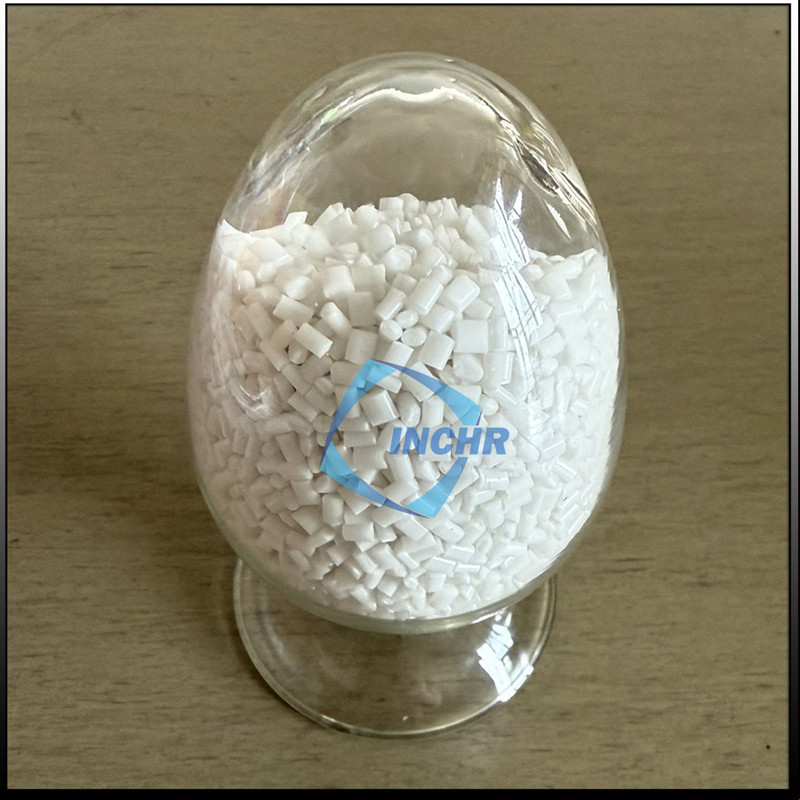Why Anti Block Masterbatch Matters in Modern Manufacturing
In an era where plastic films are becoming thinner, stronger, and more sustainable, anti block masterbatch plays a pivotal role in solving one of the industry’s oldest challenges: film blocking. This additive prevents layers of plastic from adhering during production, storage, or transport—ensuring efficiency, reducing waste, and maintaining product integrity. Let’s dive into its transformative impact across industries.
The Science Behind Anti Block Technology
Anti block masterbatch works by introducing microscopic particles (typically silica, talc, or synthetic materials) into the polymer matrix. These particles create a controlled surface roughness, achieving three critical outcomes:
Reduced Coefficient of Friction (COF): Smoother film handling during processing.
Optical Clarity Preservation: Minimal haze for applications requiring transparency.
Layer Separation: Prevents adhesion without compromising mechanical strength.
Technical Insight:
Optimal particle size: 2–8 microns (balances anti-blocking efficacy and clarity).
Load rates: 1–5% depending on film thickness and resin type.

5 Industries Revolutionized by Anti Block Masterbatch
1. Food Packaging
Prevents vacuum-sealed films from sticking, reducing waste by 25%.
Compliant with FDA, EU 10/2011, and GB 9685 food-contact standards.
2. Agricultural Films
Ensures greenhouse films remain separated while maximizing light diffusion.
UV-resistant grades extend film lifespan by 3+ years.
3. Medical Films
Maintains sterility in IV bags and blister packs.
Passes ISO 10993-5 cytotoxicity tests for safety.
4. Industrial Stretch Films
Enhances pallet-wrapping efficiency with consistent COF (0.3–0.5).
5. Biodegradable Films
Compatible with PLA/PBAT resins, supporting compostable packaging goals.
Choosing the Right Anti Block Masterbatch: A 4-Step Guide
Match Base Resin Compatibility
LDPE, LLDPE, PP, and PET each require tailored formulations.
Prioritize Particle Uniformity
Narrow particle size distribution (PSD <1.5) ensures consistent performance.
Verify Regulatory Compliance
Food-grade certifications (FDA, EU) vs. industrial-grade options.
Test Real-World Conditions
Simulate humidity, temperature, and storage pressure during trials.
Sustainability Breakthroughs: Eco-Friendly Anti Block Solutions
As demand for circular plastics grows, innovators are reimagining masterbatches:
Bio-Silica from Rice Husks: Reduces reliance on mined silica by 40%.
PCR-Compatible Grades: Maintain performance in films with 50%+ recycled content.
Low-Migration Formulas: Minimize additive leaching to meet EU’s PPWR mandates.
Case Study: A European manufacturer slashed carbon emissions by 30% using rice husk-based masterbatches in food packaging.
Avoiding Costly Mistakes: 3 Common Pitfalls
Overloading Additives
Excess particles (>5%) cause haze and brittleness.
Ignoring Storage Conditions
Moisture absorption degrades performance—store at <50% RH.
Using One Formula for All Applications
Cast films need larger particles vs. blown films.
The Future of Anti Block Technology
AI-Optimized Dispersion
Machine learning predicts particle distribution for defect-free films.
Self-Regulating Additives
“Smart” particles adjust surface texture based on environmental conditions.
Multi-Functional Blends
Anti-block + anti-static + UV protection in a single masterbatch.
FAQs for Manufacturers
Q: Can anti block masterbatch replace slip agents?
A: Hybrid grades reduce COF, but ultra-low friction (<0.2) requires specialized slip additives.
Q: How does film thickness affect masterbatch choice?
A: Films <15µm need nano-silica (1–3µm particles), while thicker films use talc blends.
Q: What’s the shelf life of anti block masterbatch?
A: Up to 18 months in sealed, moisture-controlled environments.
Why Partner with Experts Matters
Leading suppliers offer:
Custom Formulations: Tailored to your resin and production line.
Technical Support: On-site trials and COF testing.
Sustainability Audits: Align additives with ESG goals.
Conclusion
Anti block masterbatch is more than an additive—it’s a strategic tool for achieving efficiency, sustainability, and quality in plastic film production. By understanding its science, applications, and evolving innovations, manufacturers can unlock new levels of performance while meeting global regulatory standards. For optimal results, collaborate with suppliers who prioritize R&D and circular economy principles.




